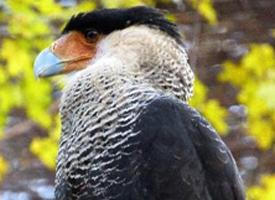
Greutăți și măsuri
| Lungime | de la 30 la 35 cm |
|---|---|
| Greutate | de la 180 la 300 g |
| Lungimea anvergurii aripilor | de la 75 la 85 cm |
Descrierea animalului
The Eurasian hobby (Falco subbuteo) is a captivating bird of prey belonging to the large family of falcons. With its agile flight, slender body, and remarkable hunting skills, it presents a fascinating study of avian adaptation and efficiency. This species is widely distributed across Europe, Asia, and Africa, showcasing its adaptability to various habitats, from open woodlands and forest edges to river valleys and farmland.Physically, the Eurasian hobby is a medium-sized falcon, measuring between 29 to 36 cm in length with a wingspan of approximately 74 to 84 cm. Its sleek body is designed for speed and agility, enabling it to catch prey in mid-air with remarkable precision. The plumage of this bird is particularly striking. Adults display a dark slate-gray back and wings, contrasting sharply with their whitish underparts that are finely barred with black. The head features a dark moustache and sideburns, typical of many falcon species, which stand out against the pale underside. Juveniles are similar in appearance but have a more rufous tone to their feathers, especially on the underparts, and their plumage is generally more streaked.
One of the most distinctive behaviors of the Eurasian hobby is its diet and hunting technique. It preys predominantly on flying insects, such as dragonflies and beetles, which it catches with its talons in mid-flight. During the breeding season, its diet expands to include small birds and sometimes bats, showcasing its versatility and skill as a hunter. The hobby's exceptional speed and agility in the air make it a formidable predator, capable of executing sharp turns and sudden sprints to catch its prey unawares.
Breeding typically occurs once a year, with the Eurasian hobby showing a preference for nesting in old crow or raptor nests, rather than building its own. The female lays between 2 to 4 eggs, which both parents then incubate. The chicks are born altricial (blind and featherless) and depend on their parents for food and protection until they are ready to fledge. The nurturing period is a critical time during which the chicks learn to fly and hunt, skills that are essential for their survival in the wild.
Migration is another significant aspect of the Eurasian hobby's life cycle. Birds breeding in Europe and northern Asia undertake long migratory journeys to sub-Saharan Africa to spend the winter. This annual migration highlights the hobby's remarkable endurance and navigational skills, as it traverses vast distances across continents.
Conservation-wise, the Eurasian hobby is currently classified as Least Concern by the IUCN, thanks to its wide distribution and relatively stable population size. However, it faces threats from habitat loss and degradation, as well as from the use of pesticides which can reduce the availability of its prey. Conservation efforts focusing on habitat protection and sustainable land use practices are crucial to ensure the continued survival of this remarkable bird of prey.
In summary, the Eurasian hobby is a fascinating example of avian adaptation, skill, and beauty. Its presence enriches the biodiversity of the ecosystems it inhabits, playing a crucial role in the natural control of insect populations and contributing to the health of its environment. As such, the Eurasian hobby remains a symbol of the wild's untamed grace and the intricate balance of nature's ecosystems.
Animale similare
Fotografii noi cu animale
Top 10 animale
- Dolphin gull (Leucophaeus scoresbii)
- Diana monkey (Cercopithecus diana)
- Moustached guenon (Cercopithecus cephus)
- Galápagos tortoise (Geochelone nigra complex)
- Stone loach (Barbatula barbatula)
- Greek tortoise (Testudo graeca)
- Japanese macaque (Macaca fuscata)
- Russian tortoise (Testudo horsfieldii)
- Common flying dragon (Draco volans)
- Galápagos penguin (Spheniscus mendiculus)


